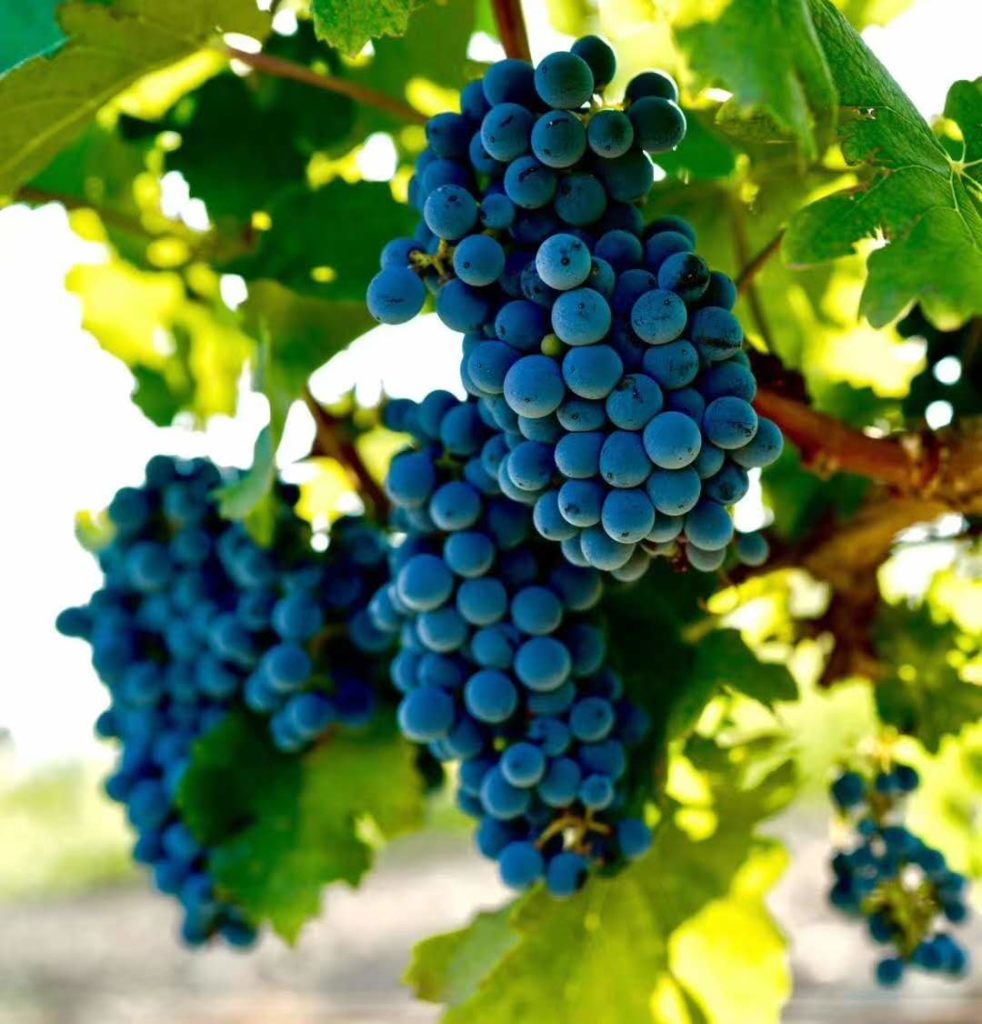For China, and Ningxia in particular, Marselan has been positioned as a flagship grape variety that is becoming increasingly popular. Marselan made a fortuitous but permanent breakthrough in Ningxia.
It was originally neglected in the Old World and never achieved any particular success. In 1961, Paul Truel crossed Cabernet Sauvignon and Grenache to producea red grape variety, named Marselan because it was created in the small town of Marseillan on the Mediterranean coast of France. Although it does nothave a long growing history like other grapes, it has inherited the strong structure and elegant fruit aromas of Cabernet Sauvignon, as well as Grenache’s strongresistance to the heat and disease. However, due to its small berry size and low juice yield, it was not planted on a large scale in Europe.
From an economic perspective and for the sustainable development of a winery, varieties with a high juice yield are more able to meet commercial productionneeds. So, it is often blended with other varietal wines and was included in the list of French AOP varieties in 2011, but is still not planted on a large scalein France. The first few wine regions to plant Marselan are Languedoc, Provence and the Rhone Valley. In 2019 Marselan was also authorised as a BordeauxAOP variety.
However, Marselan has demonstrated its unique charm in the New World, and has developed a strong following in the United States and China. Both NewWorld countries have developed a penchant for its unique taste and aroma, which is fully differentiated from traditional Cabernet Sauvignon.

Now, in addition to France, Marselan is planted in China, Argentina, Brazil, the United States, Israel, Uruguay and other New World countries.
Marselan in China
In 1997, China and France officially started cooperation in grapes and wine. The Domaine Franco-Chinois was established in 2001. It was then thatChina directly imported 16 varieties of grafted vines from France, including Marselan, with an initial planting area of 45 acres, alongside Cabernet Sauvignonand Chardonnay.
No one expected that Marselan, born in the Old World, would be stunning in the New World and become tomorrow’s star of wine. Since 2017, Chinese Marselan wines, especially those from the Helan Mountains eastern region in Ningxia, have frequently won the highest accolades in world-class wine competitions. Marselan wines are also frequently seen in the annual list of the top 100 Chinese wines published by renowned wine critic James Suckling.
In recent years, acreage of Marselan in China’s major producing areas has grown rapidly, including Huailai in Hebei, Yanqing in Beijing, Penglai in Shandong, Heshuo in Xinjiang, Tianshui in Gansu and other places.
According to incomplete statistics, the area under vine for Marselan in China has reached more than 21,000 mu (or 1,400 hectares), and in Ningxia the total is in excess of 4,500 mu (or 300 hectares). Marselan maintains its freshness in hot producing areas, yielding richly coloured, fruity and full-bodiedwines. It presents different terroir features in various producing areas in China.
In terms of its current performance in Ningxia, its fruit has large bunches with small berries, rich flavours and fine yet distinctive tannin content, resulting in wines that are purple-black in colour. The nose offers up hallmark aromas of lychee, raspberry, violets and vanilla. On the palate, red and black fruit flavours are predominant. Relatively strong tannins ensure great ageing potential.
Hence, it is the most representative variety with potential in Ningxia. Professor Li Demei, a renowned Chinese wine expert, once commented onMarselan: “With its excellent production features, strong adaptability, gorgeous rich flavours, full and concentrated taste, and versatile stylistic charm, it will offer a magical Chinese wine experience”.
Like Pinot Noir and Sauvignon Blanc grown in New Zealand, Sangiovese in Italy, Malbec in Argentina, and Syrah in Australia, Marselan may become the new ‘calling card’ of Chinese wine.
Domaine Pushang in Ningxia was one of the earliest wineries to make Marselan wine in Ningxia, followed by Lanyu of Legacy Peak, the Master Reserve collection by Chateau Huahao, Jade by Jade Vineyard, Meet You by Jiuxi Winemakers, Jiayuan by Silver Heights, Princess by Chateau Princess, FeiTswei by Fei Tswei, Yixia by Yishi Family Winery, Charme by Charme, H.Y.R.H by Chateau H.Y.R.H, Earl of Lanshan by Weijiani Winery, ChateauChanson by Xinhuibin Winery, Huanghe Hong by Sunshine Winery and the Root series by Chateau Hedong.
The wines are from Yinchuan, Qingtongxia, Helan, Shizuishan, Yongning and many other regions in Ningxia. In China, Marselan is a red wine likened to a‘pearl left by the god of wine in the corner’. Marselan was born in France, but may eventually become famous worldwide because of China.
Baudouin Havaux

